Are you part of the 10% of the human population grappling with thalassophobia? There’s absolutely no need for embarrassment. Possessing a pronounced phobia or extreme fear of deep waters, vast bodies of water, and the sudden terror of large expanses of water implies a heightened awareness of the unknown, which is often regarded as an indicator of intelligence.
And if you would have to choose any phobia, thalassophobia makes the most sense. I mean, it’s a little-known fact, but approximately 10 million viruses can be found in just one milliliter of ocean water! Not to mention the fact that colossal squids are real, and let’s not get started on the freshwater lakes that cover sunken vessels and freshwater monsters like crocodiles.
With all those pleasant thoughts at the front of your mind, in no particular order, here are 25 Real Images That Will Trigger Your Thalassophobia.
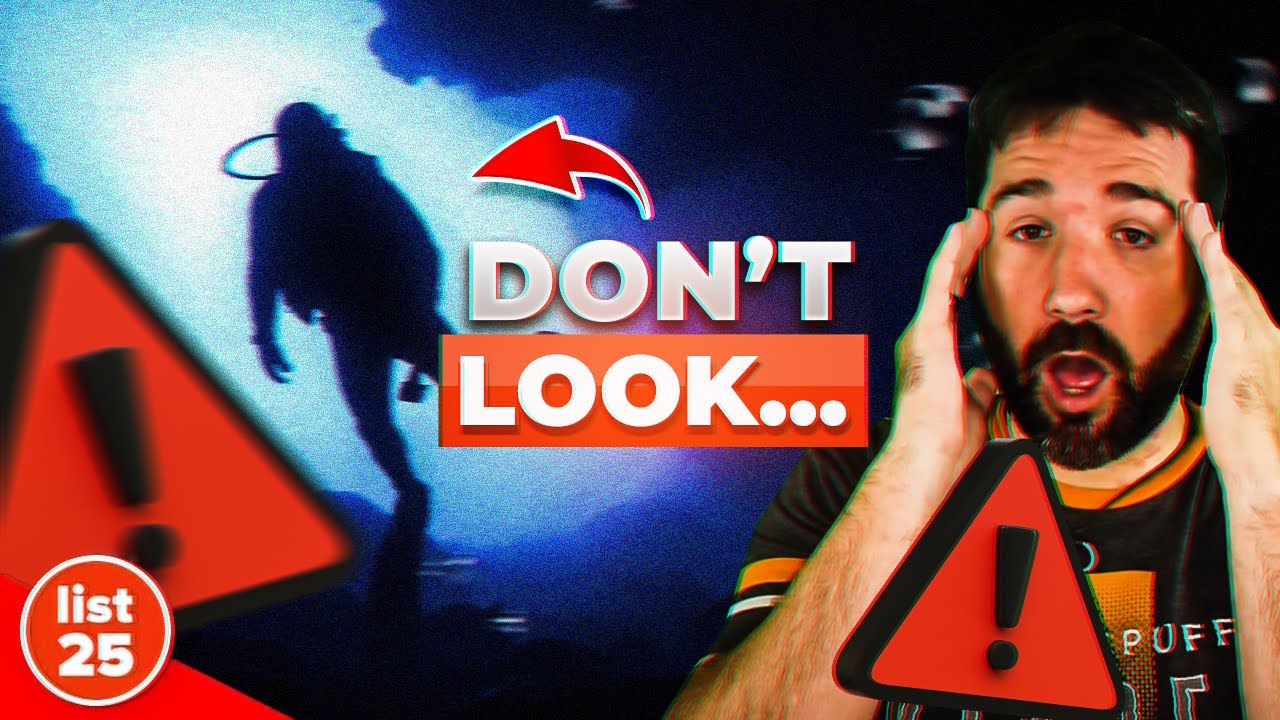
Murky Water
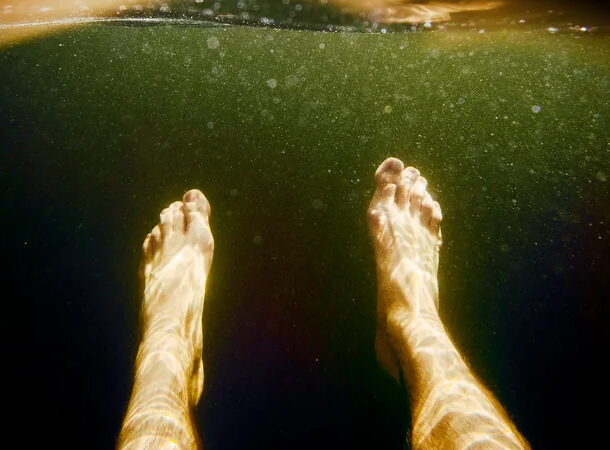 https://www.reddit.com/user/tmfult/
https://www.reddit.com/user/tmfult/ Are you one of those people who have no fear of dark and murky waters? One Reddit user known only as “tmfult” recently shared a pic of his feet immersed in a freshwater lake – dangling over what we can only describe as a black abyss. It’s a beautiful photo – artistically speaking, but we can’t understand what he was thinking when he stuck his feet in there in the first place. Has he never seen a Pirana movie?
It only takes one earthquake, tmfult. One earthquake and you’re done for.
Diving in an Overhead Environment
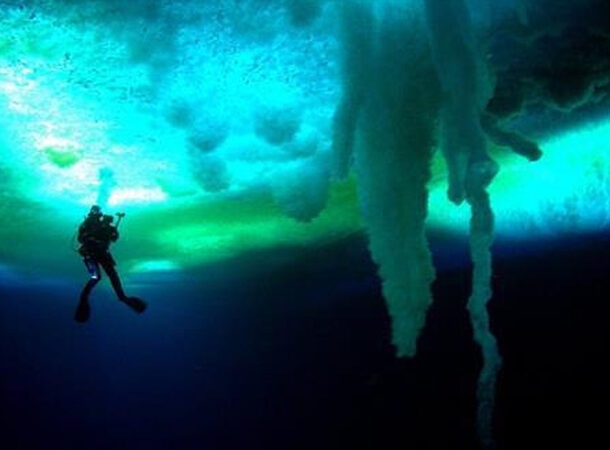 https://www.youtube.com/watch?v=aVtj_dQvVUM
https://www.youtube.com/watch?v=aVtj_dQvVUM Watch the 2007 documentary Encounters at the End of the World if you want to spill some claustrophobia onto your thalassophobia. In this film, Werner Herzog explores Antarctica, where he observes the animal world native to the bottom of the world – above and below the thick ice that keeps on thinning – and shows humanity’s similarly bizarre quest to take part in extreme exploration.
I mean, yes, above the ice, it’s pretty nice. Penguins are cute.
But why go diving underneath all that ice where you can’t get out by going up?
A Freedivers Freefall
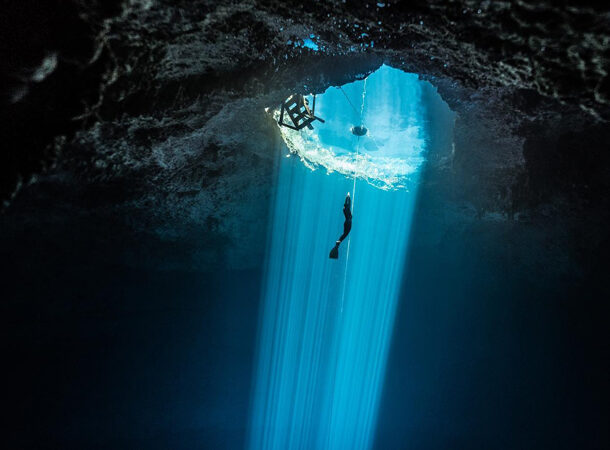 https://www.youtube.com/watch?v=wSvYIWjIaoc
https://www.youtube.com/watch?v=wSvYIWjIaoc Every diver wants to dive in Mexico’s cenotes. Also known as sinkholes or dolines, these holes are found all over the world. Travel to places like the Bimmah Sinkhole in Oman and Dean’s Blue Hole in the Bahamas, and you can admire the way erosion and water have formed these landforms over thousands of years.
But only in Mexico is the phenomenon referred to as a “cenote,” which comes from the Mayan word dzonot – meaning “water-filled cavity.” There are anywhere from 6,000 to 10,000 cenotes throughout its Yucatan region, and they are truly beautiful. Or terrifying, depending on how you look at it. Especially when a freediver records his freefall into a cenote to a depth of 100ft.
The Old Man of the Lake
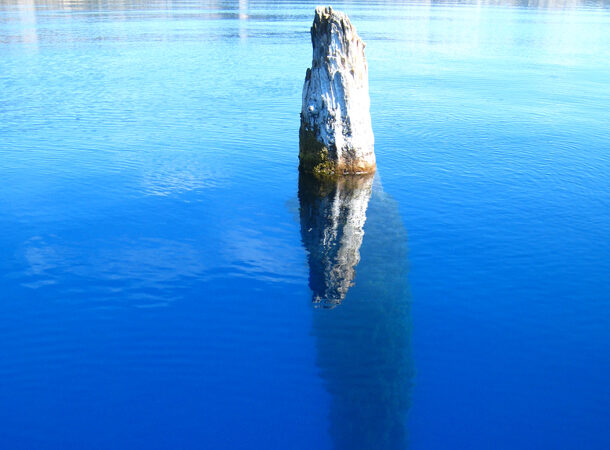 https://www.npca.org/articles/1016-the-old-man-of-the-lake
https://www.npca.org/articles/1016-the-old-man-of-the-lake Oregon’s Crater Lake has been host to a giant hemlock tree floating in its waters for over a hundred years. Known as “the Old Man of the Lake,” its sun-bleached and splintered head and torso floats nearly four feet above the water. His lower body descends 30 feet into the depths. You might be wondering why the Old Man gets an honorable mention in this list that’s supposed to be about Thalasophobia, and the answer is simple. It is CREEPY. And it floats in a massive body of water.
What makes the idea of this ancient tree so terrifying is that it looks as if it should be rooted, and yet, it’s bobbing around like it’s defying the laws of physics. Not only that, but it’s unnerving to realize how big a part of the tree remains below the surface.
A Kelp Forest
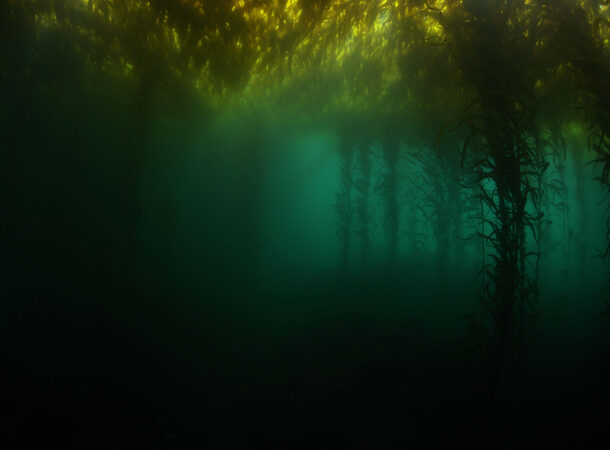 https://www.youtube.com/watch?v=itKvfKySVfU
https://www.youtube.com/watch?v=itKvfKySVfU While we’re on the subject of objects in masses of water, we thought we’d show footage of a kelp forest that’s bound to activate your thalasophobia in 5, 4, 3, 2…
Even though kelp forests can be frightening, they are essential to the planet and all of us who live here. We literally cannot live without it, from providing nursery environments and feeding grounds for a diverse range of marine animals to significantly contributing to a feeling of identity for Indigenous and coastal peoples who have used it for millennia as medicine, food, and material. But we’ll take a pass on swimming through them. Especially if there’s low visibility.
A Spearfisherman's Surprise
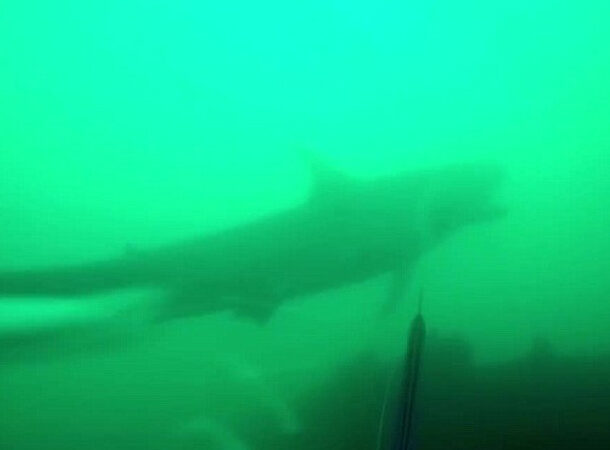 https://www.youtube.com/watch?v=LfckFEO_72I
https://www.youtube.com/watch?v=LfckFEO_72I Nothing is scarier than expecting something to be right behind you and then confirming its presence. And that feeling is substantially multiplied while underwater. One spearfisherman had just such a nasty surprise while” hunting” for dinner in 2018 off the coast of South Africa. In his GoPro footage – which is full of “nopes,” by the way – we can first see him getting into the murky green water before dropping a few feet and swimming off. What happens next is a lot scarier than 99% of horror movies.
A shark emerges from the darkness and goes straight for the spearfisherman – and guess what? All he has to try to defend himself is his flimsy spearfishing gun. Not only that, but the shark changes direction and comes for him one more time before the spearfisher safely gets back into the boat. Learn from the mistakes of others, dear friends.
The Animals
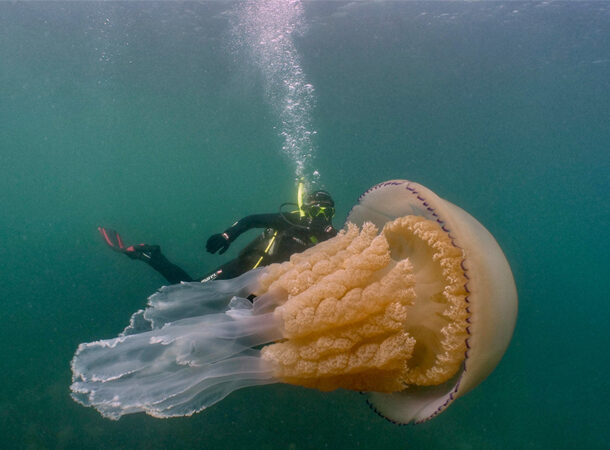 https://www.facebook.com/watch/?v=1932831576816844
https://www.facebook.com/watch/?v=1932831576816844 Biologist Lizzie Daly went swimming off the coast of Cornwall in the United Kingdom. Luckily for those who love enormous blobs of jelly, Dan Abbott went along. The underwater cinematographer filmed her encounter with a rare creature.
While diving near the southwestern tip of England, the pair noticed a giant jellyfish emerge from the dark water. It was a barrel jellyfish (Rhizostoma pulmo), a rare species that is also known as the dustbin-lid jellyfish. That is regrettably what its “head” looks like. The large dome trails eight thick arms and tentacles capable of stinging. As the United Kingdom’s biggest jellies, the human-sized creatures are mostly known from specimens that beach themselves. I think I speak for all of us when I say thanks, but we’ll pass.
Finding Weird Stuff
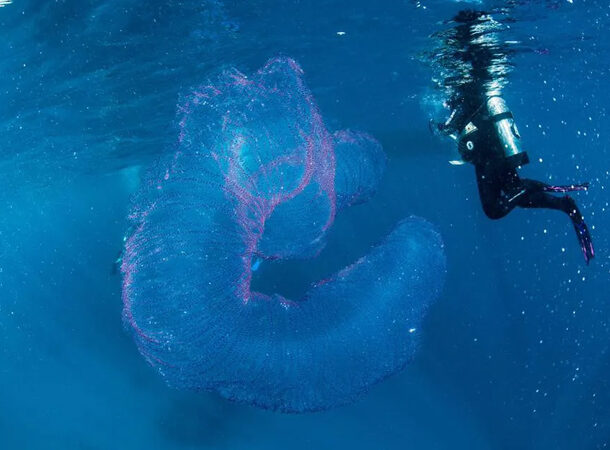 https://www.livescience.com/60427-glowing-slinky-creature-is-egg-mass.html
https://www.livescience.com/60427-glowing-slinky-creature-is-egg-mass.html We know and accept there are many weird things to be found in this world. But why do they almost always pop up in large bodies of water? In 2017, a scuba diver found something strange near the coast of Australia. It looked like some kind of creature. The thing was tube-shaped, translucent, and huge. Best of all, it glowed.
The fringe theorists quickly speculated about mystery beasts, but biologists begged to differ. The tube was not a creature but the nest of a squid lined with strings of eggs. The latter were pink with a pearl-like appearance.
Identifying the parent of a squid clutch is surprisingly hard. Nothing is definite, but scientists believe that the tube was produced by the mysterious diamond squid (Thysanoteuthis rhombus). While I’m no expert, it certainly looks like it should be the eggs of something much, much larger.
Sewer Diving
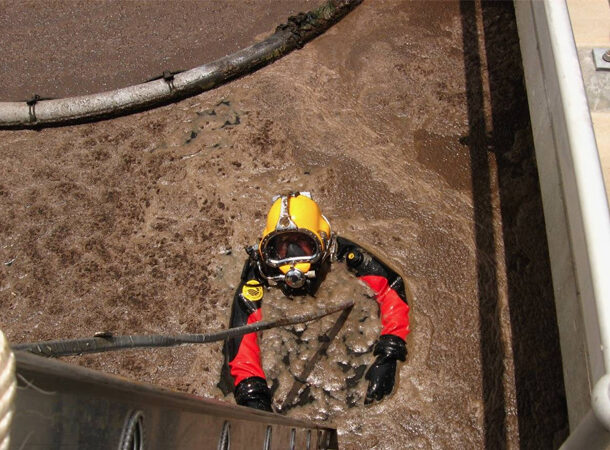 https://youtu.be/TlRjbV-rT-E
https://youtu.be/TlRjbV-rT-E We knew this would be a list full of beautiful blue images from the get-go. So we knew we had to go the extra mile, do the research nobody else wants to, and bring you ALL of the images that can trigger thalasophobia – not just the beautiful blue ones. Case in point? This is footage of actual sewer diving.
Sewer systems for major cities have a lot of moving parts. Hundreds of pipes and pumps are required to flush away the daily waste of humanity, and you better believe they get clogged up with all manner of unmentionables. That’s when you call the sewer diver. Julio Cu Camara has been plumbing the depths of Mexico City’s sewers for almost four decades to maintain the elaborate drainage system that keeps the city clean. Working in a hermetically sealed three-centimeter-thick dive suit, Cu takes weekly plunges into the black water to perform routine maintenance of motor parts.
And did we mention he does this completely blind?
Cave Diving
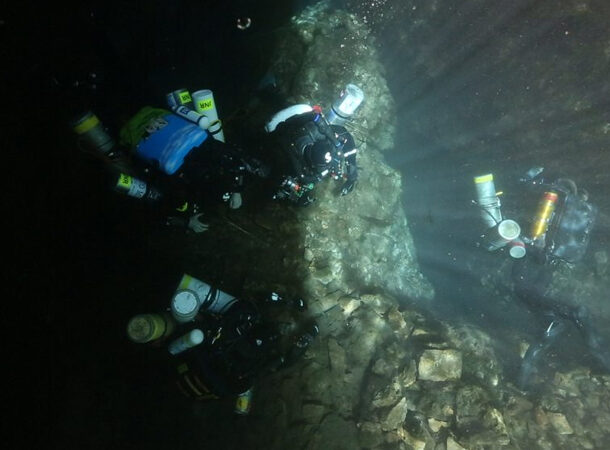 https://www.youtube.com/watch?v=OJWmI69-zKs
https://www.youtube.com/watch?v=OJWmI69-zKs While cave diving is a million times more sanitary than sewer diving, it is probably ten times more dangerous. In fact, Cave diving is insane. And it’s not just a bold statement; it is supported by a mountain of evidence.
A horrific, water-logged, decomposing, lightless mountain of evidence spread and wedged beneath the Earth in thousands of tight, jagged chambers. Cave diving is a tremendous challenge because it combines the isolation and desolation of cave exploring with the powerlessness and (sometimes literal) craziness of scuba diving. Only the most daring and talented adventurers undertake this most extreme of extreme sports, and even then, success is not guaranteed.
Abandoned Mine Shafts
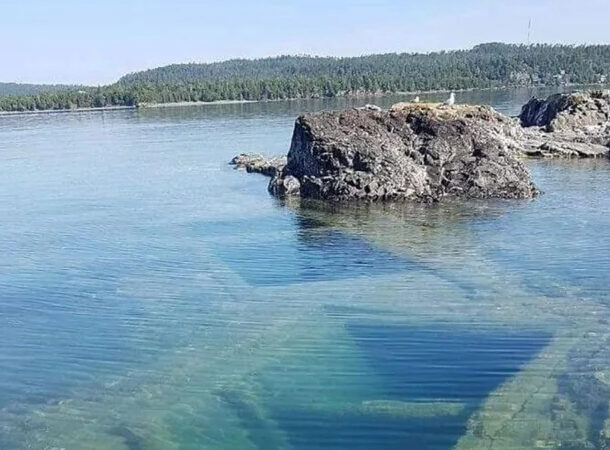 https://www.reddit.com/r/thalassophobia/comments/10z4m8q/abandoned_mine_shafts_at_lake_superior_thunder/
https://www.reddit.com/r/thalassophobia/comments/10z4m8q/abandoned_mine_shafts_at_lake_superior_thunder/ A lot of us are already unnerved by mineshafts. Something about a deep, dark, claustrophobic tunnel leading miles into the pillaged crust unsettles us to the bone. Now imagine something even more unsettling: a mineshaft filled to the brim with murky, dark water!
One of the most terrifying dives people do is to dive into the abandoned mine shafts at Lake Superior Thunder Bay, Ontario. Now, most of us won’t even swim over it – but yes, the water-loving daredevils among us will explore anything and everything, no matter the water temperature or the freshwater Kraken waiting below them.
When the Ocean Flips Ships
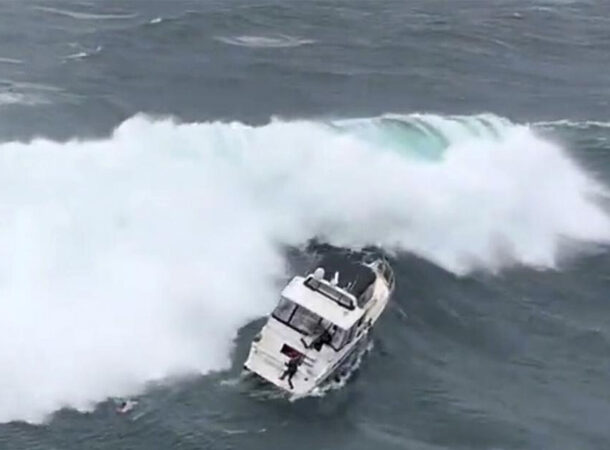 https://packaged-media.redd.it/qkajel2ouwob1/pb/m2-res_1280p.mp4?m=DASHPlaylist.mpd&v=1&e=1697126400&s=b94698e5c6e26a91b6a4e9d43b88324cb1295eed#t=0
https://packaged-media.redd.it/qkajel2ouwob1/pb/m2-res_1280p.mp4?m=DASHPlaylist.mpd&v=1&e=1697126400&s=b94698e5c6e26a91b6a4e9d43b88324cb1295eed#t=0 Earlier this year, footage taken by a Coast Guard helicopter captured the moment a 40 ft wave rolled a 35 ft yacht into the realm of the deep blue, never to be sailed again. Apart from the crazy waves and the storm, what really catches your attention when you look at the clip is the figure in black at the back of the yacht.
As it turns out, that figure is the rescue swimmer who participated in his first rescue shortly after graduating from his Coast Guard’s rescue swimmer training. While the poor young man certainly received a memorable baptism, it’s worth noting that the Columbia River’s mouth, where this particular rescue took place, has been described as “the graveyard of the Pacific.” A lovely name for a lovely place, we’re sure.
Saturation Diving
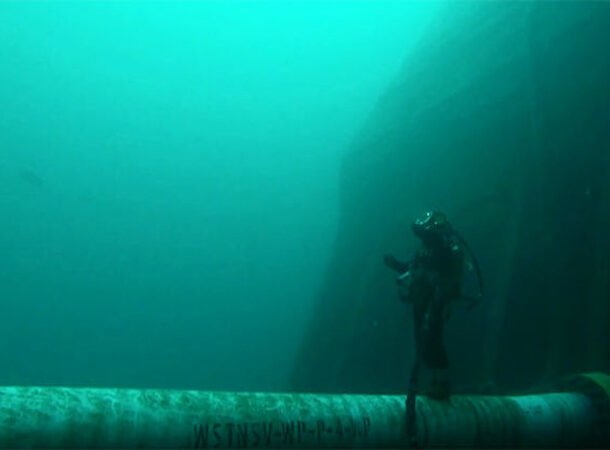 https://www.youtube.com/watch?v=bUgcjS5bW4o
https://www.youtube.com/watch?v=bUgcjS5bW4o Forget about Mars. If you watch the linked clip, you’ll see that if you swim deep enough, you’ll arrive on another planet. Light and darkness bend deep beneath the waves, and the lack of air will undoubtedly make you feel like an explorer on the murky surface of a strange, unfriendly planet. Just ask saturation divers. They are the (mostly) men who build and demolish structures at depths of up to 1,000 feet or more beneath the ocean’s surface.
A saturation diver’s job begins when he steps off the “beach” (any solid ground) and onto a flat-bottomed craft known as a DSV or dive support vessel. Every piece of equipment and every person on the vessel supports the divers in some way or form. There are dive supervisors, subsea managers, life support technicians, assistant life support technicians, and life support supervisors. They control what the divers breathe and eat, provide personal necessities, and even remotely flush the toilet—whatever is required to keep them comfortable (or alive). It is not a job for the feint-hearted or even regular divers and is nightmare fodder for the thalassophobes among us.
Whirlpools
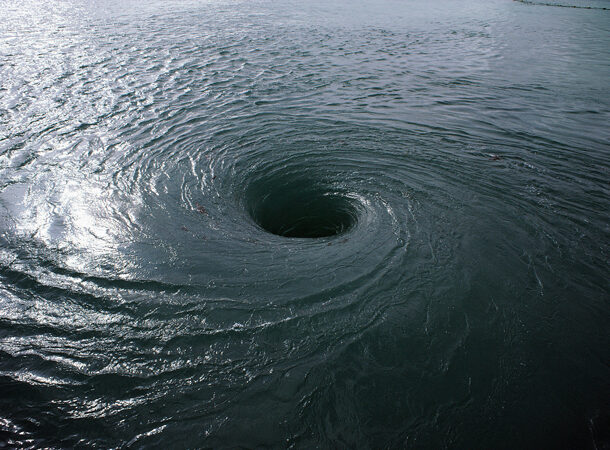 https://www.youtube.com/watch?v=vOx-z5YS1aE
https://www.youtube.com/watch?v=vOx-z5YS1aE If we haven’t given you enough reasons to stay out of big bodies of water yet, hold on to your hats – because we still have a way to go. Whirlpools are rotating bodies of water created by opposing currents or if heavy currents flow into an obstacle, such as dams or weirs. Some whirlpools are created in the ocean from fast-flowing currents and tides. And for some reason, some people like to jump into them…
The one in Hayle Harbour appears only a few times yearly when the tide comes in faster than the water can pass through a tunnel beneath the quay. In 2013, a young photographer/videographer/artist who had a fascination with water photography decided to jump into the swirling vortex with his GoPro to get footage of the underwater vortex and tragically drowned.
The Big Blue off the Coast of Oahu
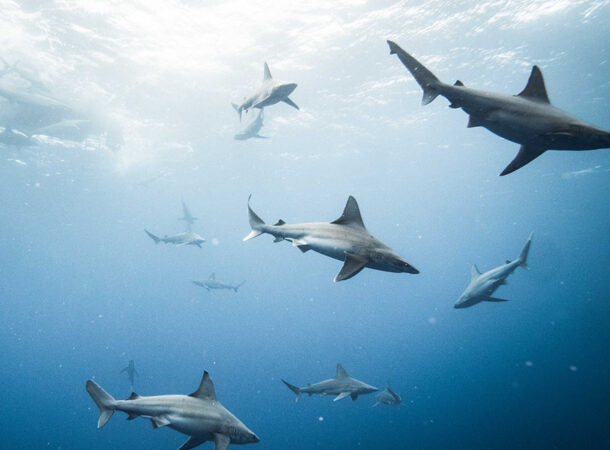 https://packaged-media.redd.it/3xveyio0pwqb1/pb/m2-res_1280p.mp4?m=exp-bf%2FDASHPlaylist.mpd&v=1&e=1697101200&s=0af5ae61dcdde099f15be63937252049a18d8ee3#t=0
https://packaged-media.redd.it/3xveyio0pwqb1/pb/m2-res_1280p.mp4?m=exp-bf%2FDASHPlaylist.mpd&v=1&e=1697101200&s=0af5ae61dcdde099f15be63937252049a18d8ee3#t=0 Diving must be so much fun. You get to wear funky black superhero suits, kit up with tons of space-age-looking gear, wear fancy watches that beep and jump into the open sea. Sounds great! Until you do exactly that off the coast of Oahu, Hawai, and are met with a sight that one diver known a “my2cents4sale” had to see. Sharks. Sharks everywhere. And the bottom of the ocean is nowhere in sight.
That gets a big fat nope from us.
Diving in an Oil Spill
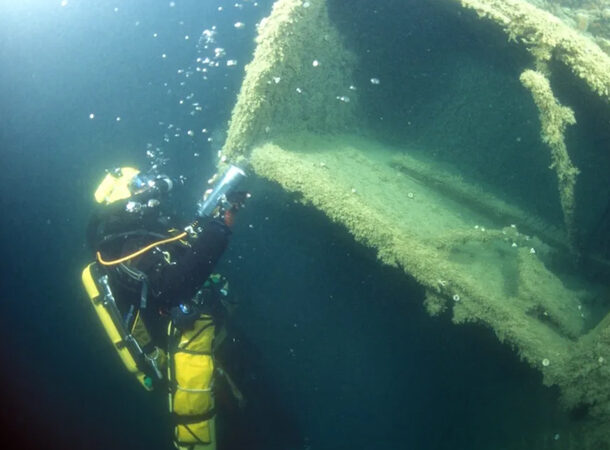 https://youtu.be/FGX7krQYI_4
https://youtu.be/FGX7krQYI_4 In this clip, we can see divers diving into the ocean after the Deepwater Horizon oil spill that took place in 2010. Yes, that is crude oil and divers swimming through it. Any thelasaphobe’s dream scenario. But they didn’t just do it on a whim.
The Deepwater Horizon incident in the Gulf of Mexico was one of the worst ecological disasters in American history. Along with commercial fishermen and Gulf Coast residents, the divers brought in to clean up the spill were among the most seriously affected victims. Despite the massive levels of carcinogenic crude oil swirling in the ocean, BP’s health and safety experts informed commercial divers assigned for this work that they didn’t need any additional protective gear. The crews worked up to 20 hours a day in the hazardous waters, and some divers became ill even before the cleanup was finished. The crude oil itself was one source of contamination, but it’s also probable that the dispersants employed by the divers while cleaning it up exposed them to toxic chemicals.
That Shark Week Clip
 https://www.youtube.com/watch?v=j0chL87gPag
https://www.youtube.com/watch?v=j0chL87gPag Discovery’s Shark Week has received a lot of criticism over the years for its portrayal of sharks and, of course, their use of CGI to add more shock value to its programs. However, in 2022, the producers got their best footage of all time during a massive great white shark attack – and it was 100% real. It’s so real, in fact, that we’ll probably never go back into the ocean again. Ever.
Do not, we repeat, do not, watch the clip if you have thalassophobia. In the video, we can see a hapless diver (it’s always a diver) sitting in a see-through box just below the surface of the water. Beneath him, a 16ft shark is circling, giving him the odd nudge or two.
Suddenly, the shark attacks from below, coming towards the box with its jaws wide open and takes a massive bite into the box. Crushing it. Above the surface, another camera captures the shark breaking through the cage, prompting screams and a fair amount of swearing as the diver ends up in the water. We can confirm that the diver makes it without going into too much detail – but it is the scariest footage we’ve ever seen.
A Night Dive
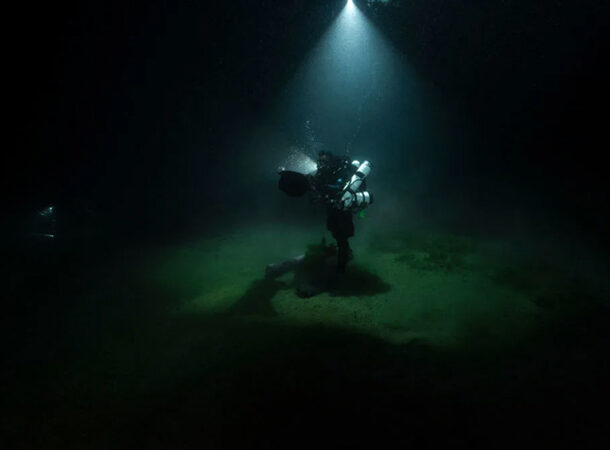 https://www.youtube.com/watch?v=u8J9svUIqB8
https://www.youtube.com/watch?v=u8J9svUIqB8 We understand Scuba Diving in a tropical destination- it’s beautiful, the water is blue, you can see lots of beautifully colored tropical fish, and, perhaps most importantly, you can clearly see the poisonous ones. (Let’s forget the thousands of miles of water to your sides for now.) Which is why we just need help understanding the interest in night dives.
Really, divers? Please explain why you would want to jump into pitch-black water at night, armed with only a torchlight, to look at corals and fish. At least at those that are a meter or so away from you because we know you can’t see anything further than that. It’s just pitch-black water stretching for miles and miles. Don’t you get scared imagining all those creatures and oddities that could be staring at you from just a few meters away? Like Discovery Shark Week Sharks…
A Surprise Visit
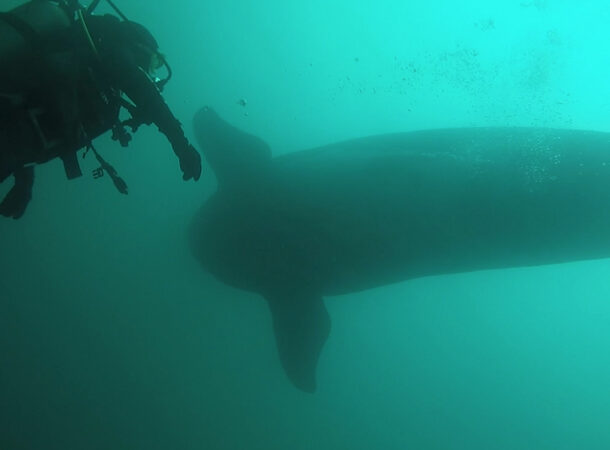 https://www.youtube.com/watch?v=SFfyRK6C9X8
https://www.youtube.com/watch?v=SFfyRK6C9X8 Okay, maybe we were exaggerating when we said we got scuba diving in tropical destinations. Yes, we know, it’s all so mesmerizing and pretty, and your breath makes bubbles. And then this happens.
Maybe it’s just the poor divers’ wild gestures that got my heart palpitating, but the fact of the matter is that even if you’re diving in clear blue waters, your visibility is limited – everything just looks blue from a certain point onward. Clips like these prove that you never know what could be waiting for you just around the coral or shipwreck.
Swimming in an Underwater Lake
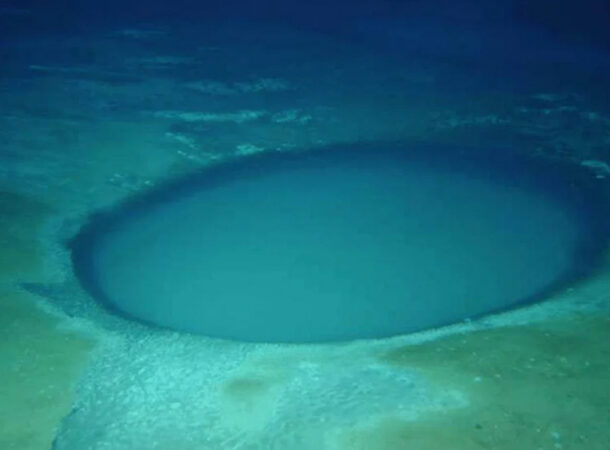 https://packaged-media.redd.it/whm8qs0r0zqb1/pb/m2-res_1280p.mp4?m=exp-bf%2FDASHPlaylist.mpd&v=1&e=1697011200&s=0790584b6b81fcb748f929c397b411b3fd903c98#t=0
https://packaged-media.redd.it/whm8qs0r0zqb1/pb/m2-res_1280p.mp4?m=exp-bf%2FDASHPlaylist.mpd&v=1&e=1697011200&s=0790584b6b81fcb748f929c397b411b3fd903c98#t=0 In the clip we discovered on Reddit, a man goes for a serene swim in an underwater brine lake over 100ft beneath the ocean’s surface. It looks dreamy, almost perfect. Except for the fact that he’s not wearing any diving gear and will probably run out of oxygen within a minute or two. That, and all the sticks or tree branches that he could probably get stuck on. Oh yes, and we can’t see the surface, so just how far does this guy have to swim back to get fresh air after his moment of serenity? A 100+ ft is deep!
This particular brine pool seems kind of safe to swim in, but scientists discovered another one in 2022 with an encouraging name: The Brine Pool of Death. Anything that swims into it dies. This is because fish adapt their gills to survive in very specific salt levels- that’s why freshwater fish cannot survive in the ocean. However, brine pools are recorded to be too salty for even saltwater fish to handle, so when they swim through the brine, their gills malfunction, and – in all practicality – they drown. To know that not even fish are safe from drowning is quite disconcerting, to say the least.
The Unsettling Underwater River
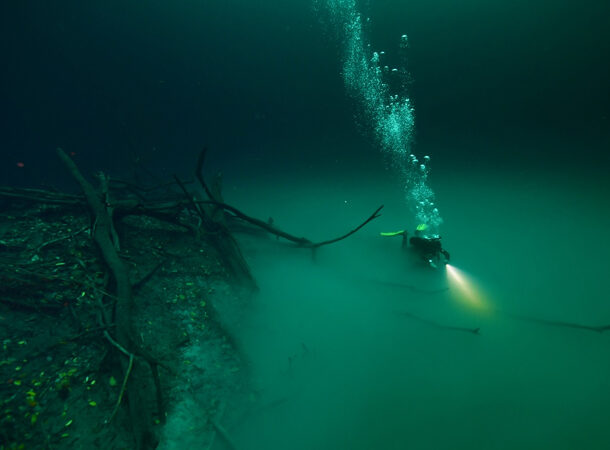 https://www.youtube.com/watch?v=iHBvKDOfWiI
https://www.youtube.com/watch?v=iHBvKDOfWiI While we’re on the subject of deadly pools of death, we thought we’d also introduce you to the deadly halocline river that can be found in The Cenote Angelita in Mexico’s Yucatan Peninsula.
From above, it looks like a regular freshwater pool. Divers who descend about 30 meters (100 ft) encounter an incredible sight – an underwater river. It is enveloped by an eerie mist that wraps the river in an ethereal blanket that’s at least 3 meters (10 ft) thick. The divers that dare to swim into the mist often start to panic. The cloud is pure hydrogen sulfide and makes for a highly disorienting swim. Not only that, but the gas is fatal to inhale. Here at List 25, we don’t judge, but really, people, there are more comforting experiences to get lost in.
Freediving the Zenobia
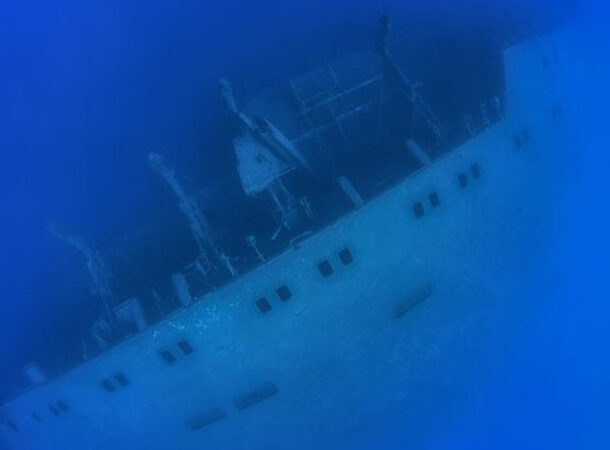 https://www.youtube.com/watch?v=drv-Eejpam4
https://www.youtube.com/watch?v=drv-Eejpam4 Freedivers are a different breed of human. They make up the men and women who are the closest to superhumans we can get. It is an incredibly dangerous sport; any mishaps can be as disastrous as anything performed in the sky. Looking at freediver William Trubridge taking a swim through the Zenobia (a wreck off the coast of Cyprus) in a single breath might be one of the most panic-inducing clips we can put you through, but we did it anyway. William actually invites you to try and hold your breath with him – we tried and failed miserably.
A Lovely Day on a Cruise Ship
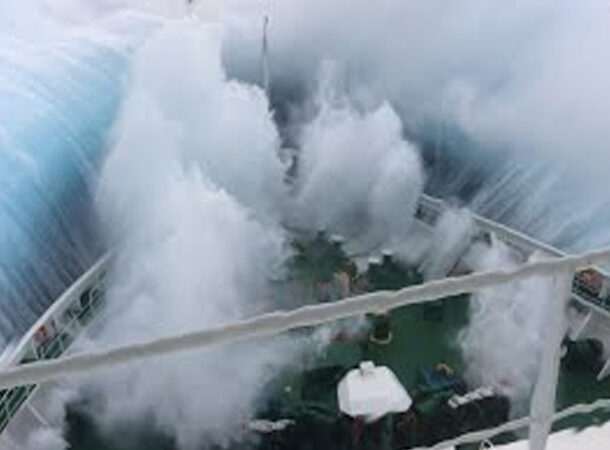 https://www.youtube.com/watch?v=j2sxfx3SSCQ
https://www.youtube.com/watch?v=j2sxfx3SSCQ Have you ever been on a cruise? You know, the type where everything is paid for, and you get to eat and drink to your heart’s content for a week at sea? I’ve heard it’s great fun. In fact, some people prefer to do cruises every year instead of going on long drives toward typically overcrowded beaches. In fact, one Australian couple recently decided to spend their life savings on 51 back-to-back cruises as it bought them more fun than double the money at old age homes. In our opinion, those are the goals we should all aspire to achieve. But maybe not the part about the cruise ships.
We found incredible footage of what it looks like when a cruise ship gets caught in a storm, and we might rather spend our life savings on a house near the beach – or far from it, just to be sure.
A Lovely Day on an Oil Rig
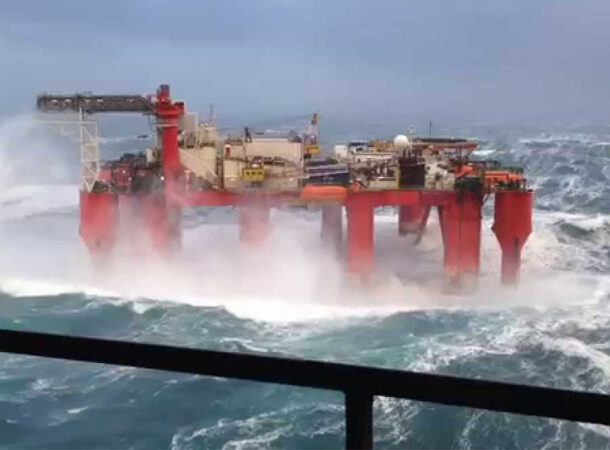 https://www.youtube.com/watch?v=D2dv57CpT-s
https://www.youtube.com/watch?v=D2dv57CpT-s Have you ever watched a video that made you seasick? This one might. The terrifying video was shot by offshore worker James Eaton in 2015 and shows the barrage of massive waves that hit the Borgholm Dolphin installation 145 miles east of Aberdeen in the North Sea. The oil rig weighs almost 15,000 gross tonnes and is part of the more extensive Dolphin Drilling fleet, which also includes rigs off the coast of Norway. And to think, Vikings sailed over that with nothing but a wooden ship. As a species, we’re just not the same anymore.
Iceberg Exploration
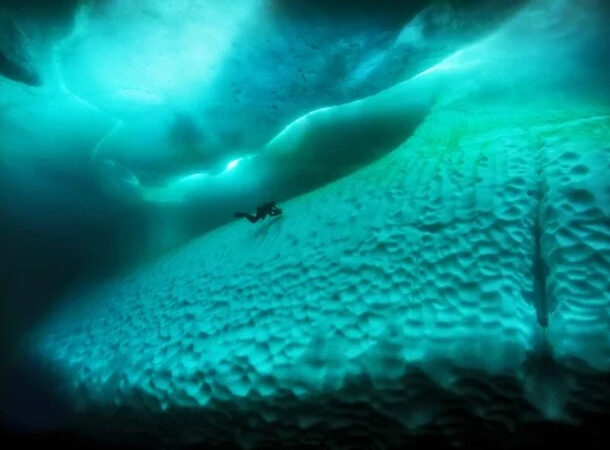 https://youtu.be/g5p3DEUndYM
https://youtu.be/g5p3DEUndYM The following account should probably not be heard if you are a thalassophobe and we apologize in advance.
You might have heard of cave diving, but how about diving in a floating ice cave? That’s what professional cave diver Jill Heinerth and her team did in 2019, marking the first-ever dive into the crack of an iceberg. During the descent, Heinerth and her diving companion were pelted by falling isopods, a type of cold-water crustacean that she described as “horror story material.”
But things got a lot hairier. On the next dive, a strong current pulled them into the iceberg, and the team only survived by sheer luck as they found an alternate way out.
On the third dive, Heinerth took two other divers with her into the iceberg. After descending into the crevasse, she immediately realized the current was too strong and gestured to her companions to leave. Only once again, they couldn’t leave. After dragging themselves against the current towards the exit, they could not get back up the crevasse due to water pouring in. Heinerth devised the plan of scaling the crevasse wall using tiny holes in the glacier as handholds. After climbing 130 vertical feet of ice, the crew survived.



























